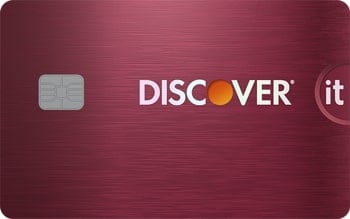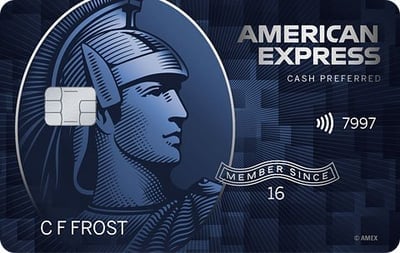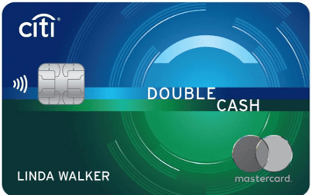Looking at Store Credit Cards? You’ll Likely Get More Value Out of These Cards
A regular rewards credit card is usually a better overall value than a store credit card, with more options for earning and redeeming rewards.

Many or all of the products on this page are from partners who compensate us when you click to or take an action on their website, but this does not influence our evaluations or ratings. Our opinions are our own.
Perhaps you've been shopping at the same store for years. You know where everything is, its prices fit your budget, and it carries the products you want.
When the cashier offers you a store credit card application, you might think, why not?
But in most cases, store credit cards are a better deal for the store than they are for the customer. Store cards tend to have:
Low credit limits. One big shopping trip can bring you close to maxing out the card. That's not good for your credit score.
High interest rates. Carrying a balance in a high-interest card makes every purchase much more expensive.
Limited usefulness. Most store cards can be used only at one store, or maybe a handful of affiliated retailers.
In most cases, a regular rewards credit card is a better overall value than a store card. You'll almost always get a higher credit limit and a lower interest rate. Better yet, you earn rewards everywhere you shop. Try these great cards for shoppers.
5% cash-back bonus categories
It's pretty hard to beat the Discover it® Cash Back if you like to shop. This card pays 5% back on up to $1,500 in spending per quarter in bonus categories that you activate and 1% back on all other purchases. The annual fee is $0.
This card is especially useful during the holidays, since fourth-quarter bonus categories have historically included Target and department stores — perfect places to buy gifts. Most department store cards can't hold a candle to the introductory APR of the Discover it® Cash Back: 0% intro APR for 15 months on purchases and balance transfers, and then the ongoing APR of 18.24%-27.24% Variable APR. Here are the current bonus categories:
Tip: The Discover it® Cash Back works well when paired with another great rotating bonus category card, the Chase Freedom®. Strategic shopping allows you to maximize both cards' bonus categories.
Discover bonus rewards categories for 2025 | |
|---|---|
Q1 (Jan. 1-March 31) |
|
Q2 (April 1–June 30) |
|
Q3 (July 1–Sept. 30) | TBD. (In 2024: Grocery stores; Walmart.) |
Q4 (Oct. 1–Dec. 31) | TBD. (In 2024: Amazon; Target.) |
High rewards at the supermarket
Many of the things you buy are one-time or occasional purchases. But you have to eat every day. If you spend a lot at the supermarket, the Blue Cash Preferred® Card from American Express is a great addition to almost any wallet. It pays 6% rewards on up to $6,000 per year in purchases at U.S. supermarkets. A family of foodies might exceed that spending limit, but you'll still get 1% back at the supermarket once past the limit. The card also pays 6% cash back on select U.S. streaming subscriptions; 3% cash back at U.S. gas stations and on transit (including such things as taxis, rideshares, parking, tolls, trains and buses); and 1% cash back* on all other purchases. Terms apply (see rates and fees). It has a fee, currently: $0 intro annual fee for the first year, then $95. You'll offset the annual fee if you spend just $31 a week at the supermarket. This card also offers a welcome bonus that could make a sizable dent in your shopping bills: Earn a $250 statement credit after you spend $3,000 in purchases on your new Card within the first 6 months. Terms Apply.
A flat-rate cash-back card
If you don't want to mess with bonus categories or using different cards for different types of purchases, a flat-rate card is a good way to keep things simple. The Citi Double Cash® Card pays 2% back on every purchase: 1% when you buy something and another 1% when you pay it off.
A great travel credit card
The Chase Sapphire Preferred® Card is well-loved because of its generous sign-up bonus and high rewards rate — especially on travel and dining purchases. Many people eat at restaurants more often than they shop at one specific store, so a card that offers great rewards on restaurant purchases may have more day-to-day value than a store card. You'll earn 5 points per $1 spent on all travel purchased through Chase; 3 points per $1 spent on dining (including eligible delivery services and takeout); 3 points per $1 spent on select streaming services; 3 points per $1 spent on online grocery purchases (not including Target, Walmart and wholesale clubs); 2 points per $1 spent on travel not purchased through Chase; and 1 point per $1 spent on other purchases. Points are worth 1.25 cents apiece when redeemed for travel through Chase. The annual fee is $95.
Tip: To earn a flat 2 miles per $1 spent on everything, take a look at the Capital One Venture Rewards Credit Card. Its miles can be redeemed for credit against any travel purchase at a rate of 1 cent per mile.
Great rewards for average credit
Store cards are sometimes more forgiving if your credit isn't perfect. But the Capital One QuicksilverOne Cash Rewards Credit Card is available to people with average credit, defined as anyone with FICO scores in the 630 to 689 range. It has an annual fee of $39 and pays a flat 1.5% on all purchases. Capital One may increase your credit limit if you pay on time for as little as six months. The ongoing APR is 29.74% Variable APR.
If you really want a store card
Store credit cards are not all bad. Far from it. If you check out the APR before carrying a balance, make sure there isn't a general card that would be better for you, and shop at the same store often enough to make it worth it, applying for a store card could make sense. See NerdWallet's best store credit cards.
Find the right credit card for you.
Whether you want to pay less interest or earn more rewards, the right card's out there. Just answer a few questions and we'll narrow the search for you.






